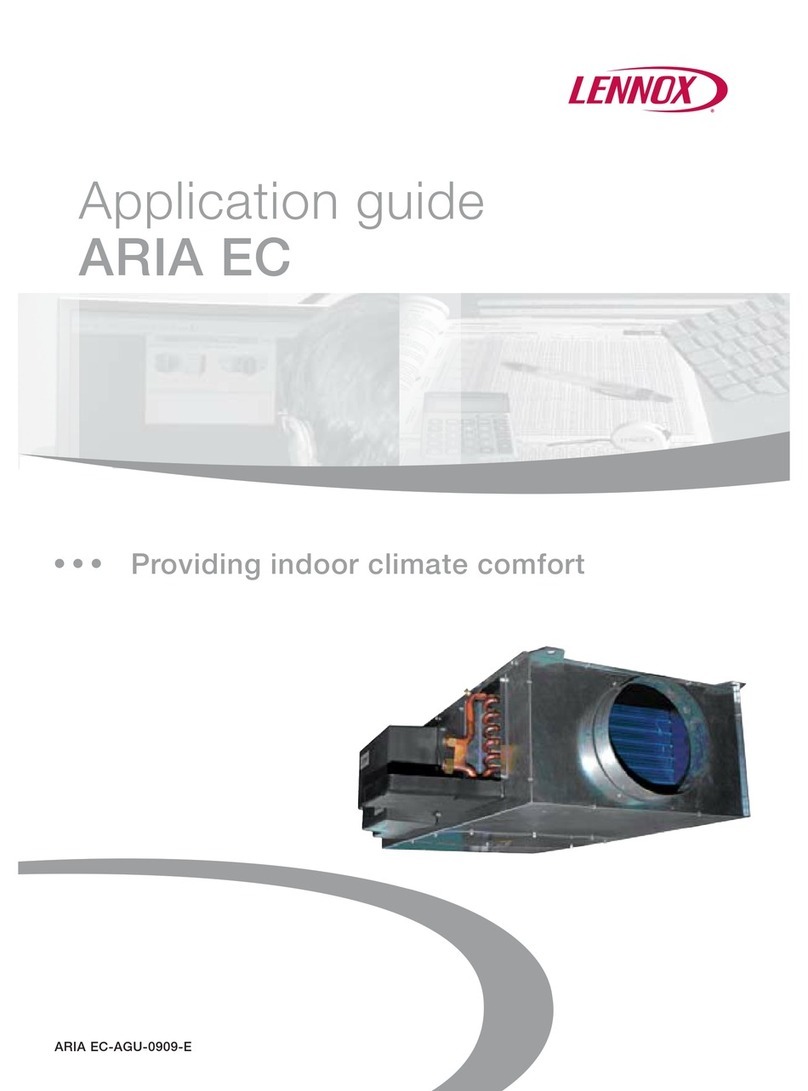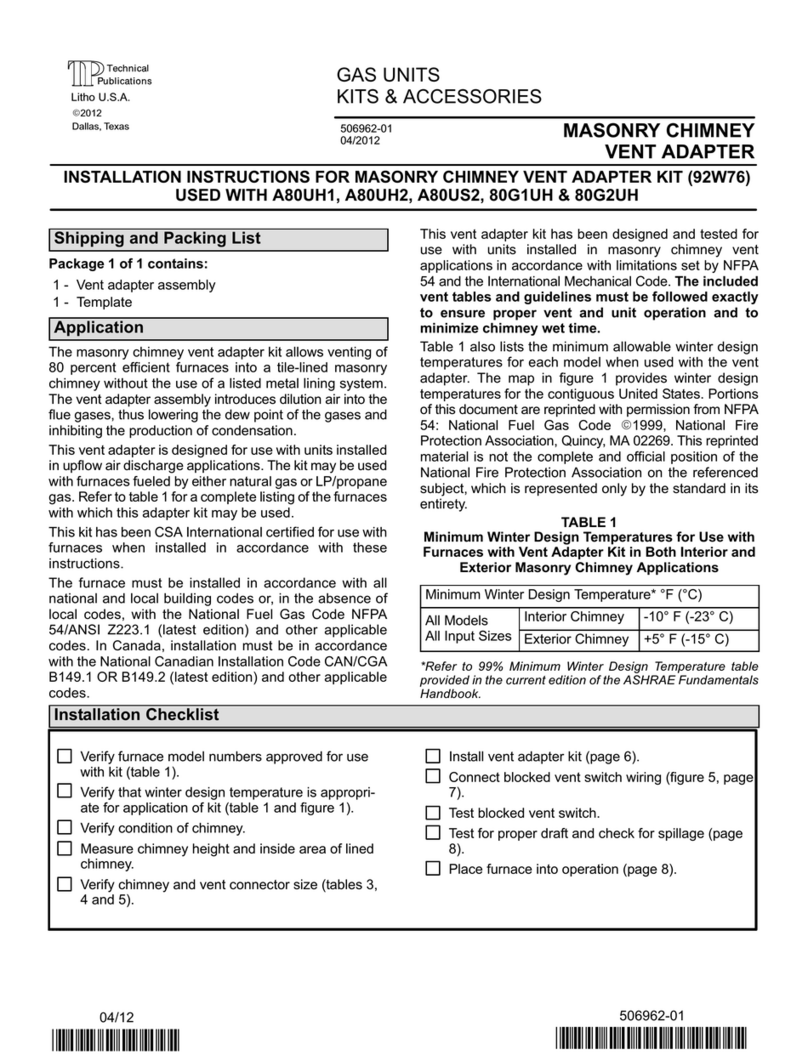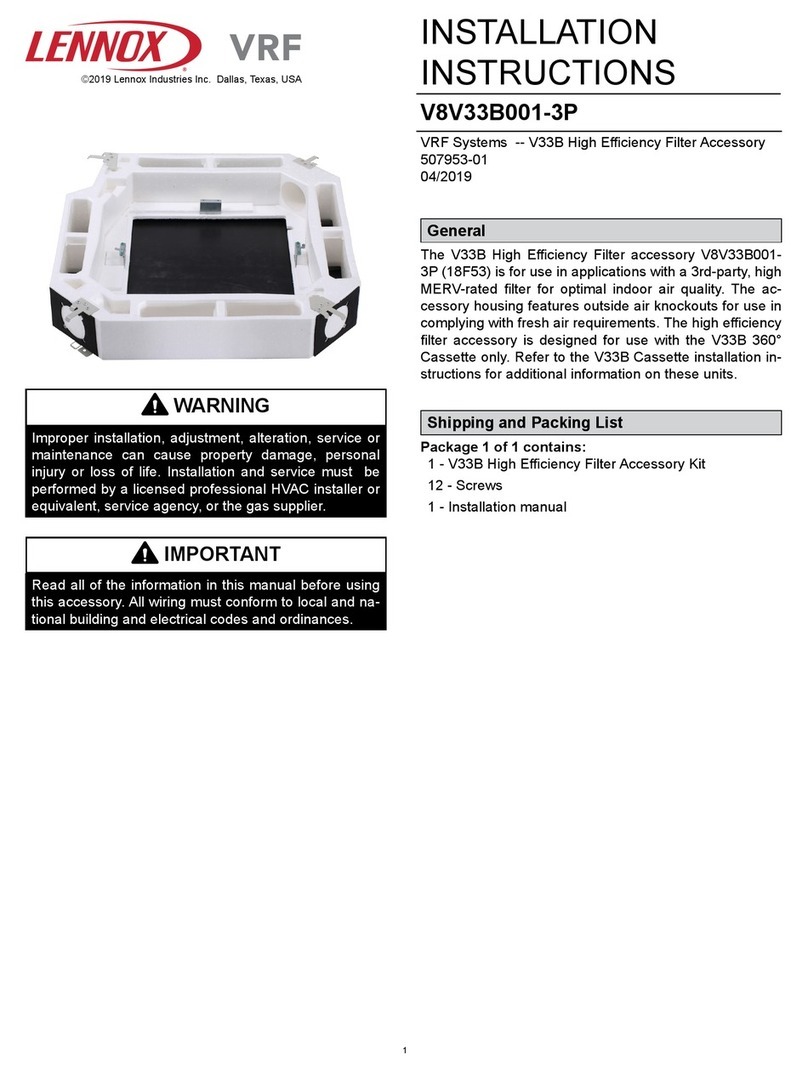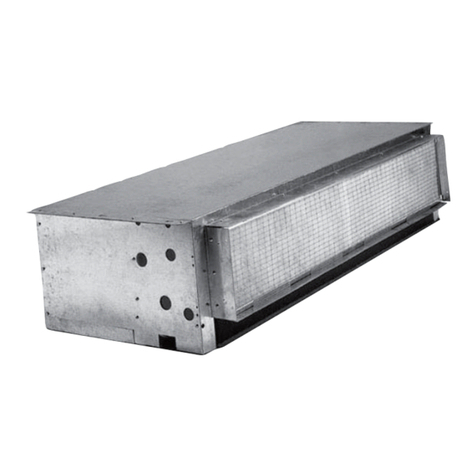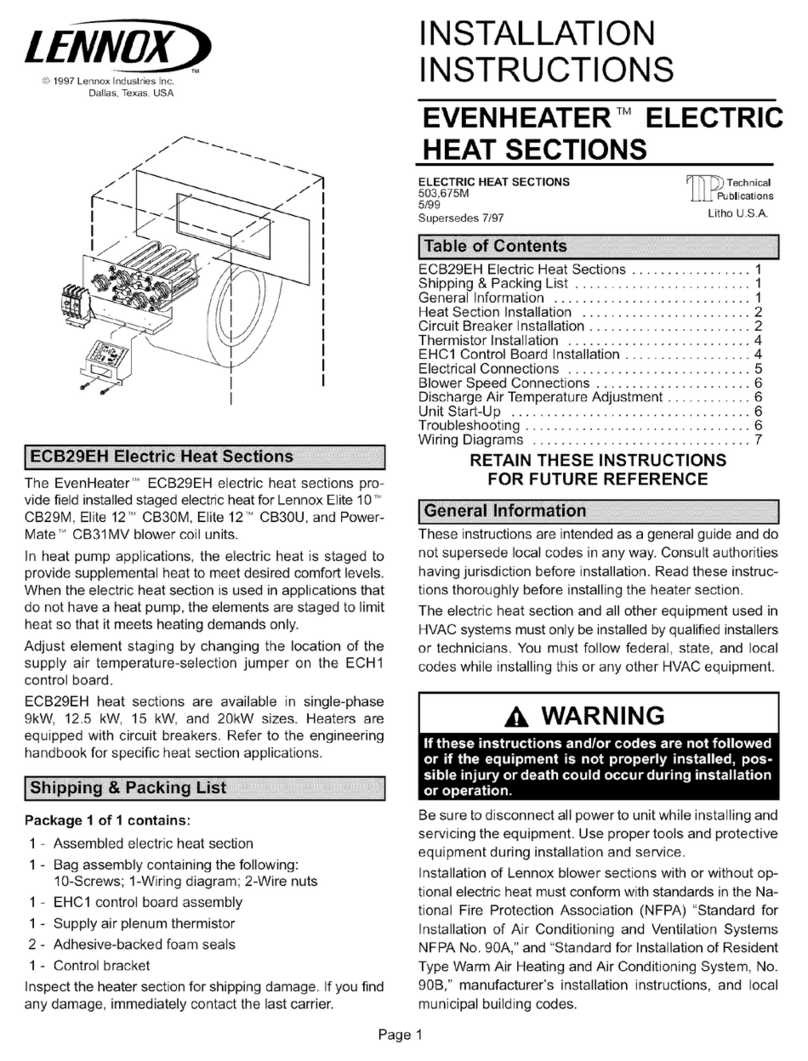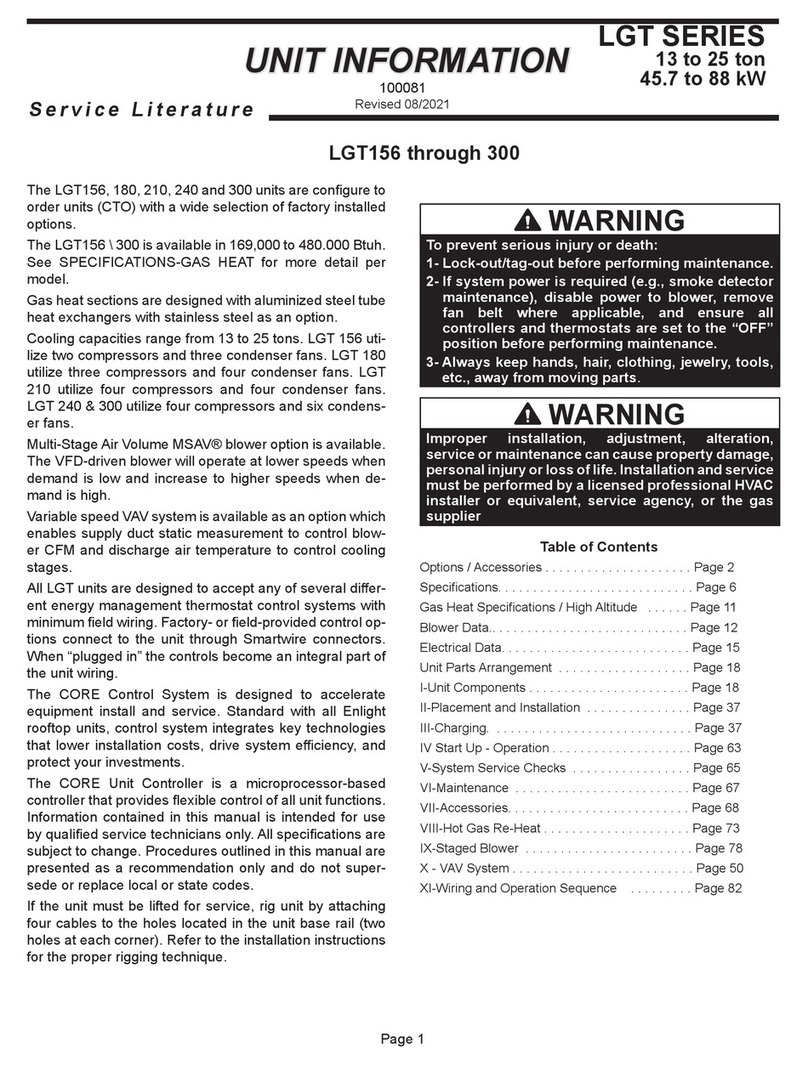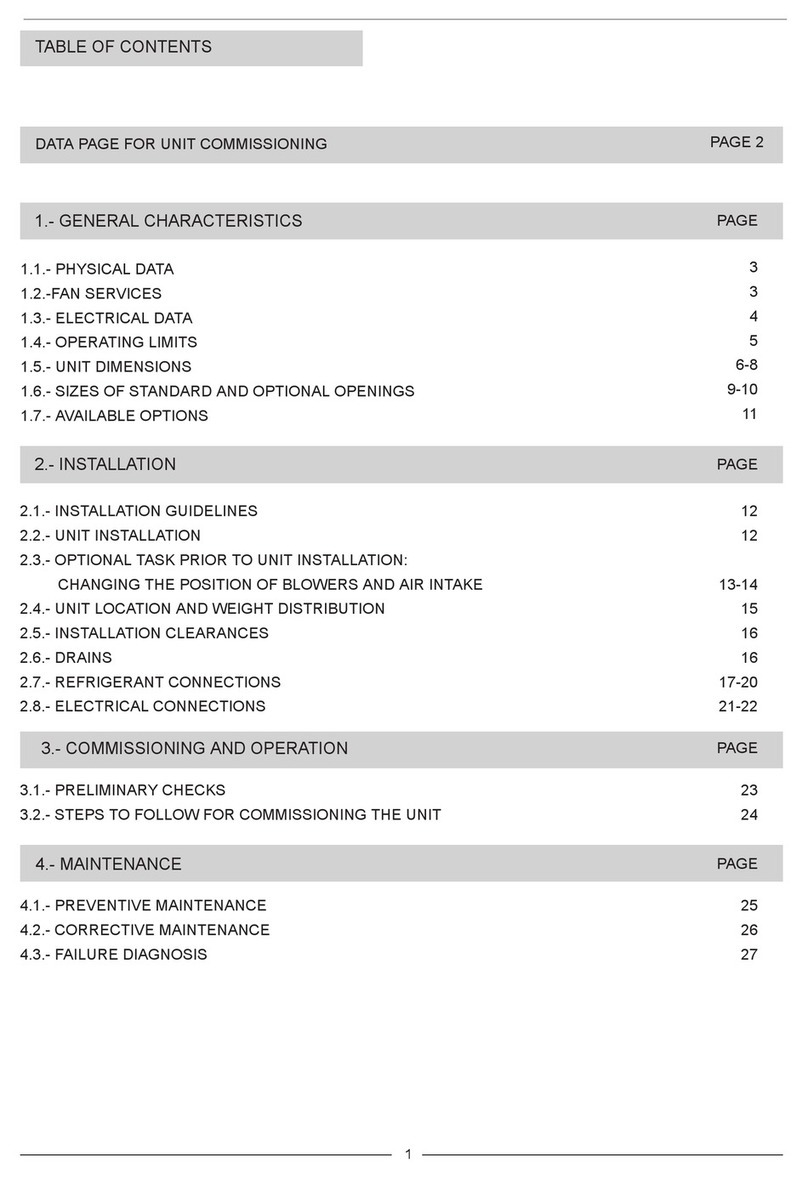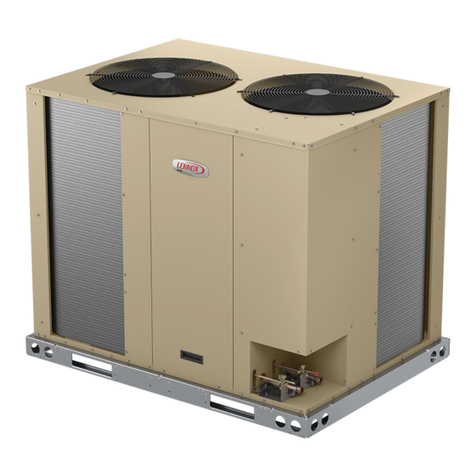
7
Placement
WARNING
Use the provided and specied components when
installing equipment. Failure to do so may result
in unit falling, water leaking or electrical shocks,
causing personal injury or equipment or property
damage.
Check stability of unit support. If support is not
capable of carrying weight of the unit, unit may fall
causing personal injury or equipment damage.
Consider the possibility of earthquakes in your
area when installing the equipment. If the unit is
not correctly secured, it may fall, causing personal
injury or equipment damage.
Safely dispose of packing materials, which include
nails, wood and other sharp objects, as well as
plastic wrapping. Children playing with plastic
wrap or bags risk the danger of suocation.
Outdoor Unit Positioning Considerations
In addition to clearances, the following items should be
considered when setting the outdoor unit:
• If low ambient cooling hood is applied, the outdoor unit
should be set at medium static pressure mode (40Pa).
Add 12 in. (305 mm) to standard mounting clearances
• Allow sucient space around unit for proper operation
and maintenance.
• Install the unit high enough above the ground or roof to
allow adequate drainage of defrost water and prevent
ice or snow build-up.
• Carefully consider how to manage defrost and
condensate water disposal to prevent ice from creating
hazardous conditions near walkways and egresses.
• Use heated tape on condensate drain line.
• Locate unit so winter prevailing winds do not blow
directly on to the outdoor unit.
• In heavy snow areas, do not locate the unit where
drifting will occur. The unit base should be elevated
above the depth of average snows.
Wind Barrier
Inlet Air
Prevailing Winter Winds
39” (991mm)
Min. Distance
Figure 1. Prevailing Winds Barrier
• Discharge air duct will remain free of obstructions at a
minimum distance of 18 ft. (5.5 m).
• Discharge air shall not be directed toward operable
windows or building fresh air intakes.
• Appliance exhaust such as drier and kitchen exhaust
vents shall maintain a minimum distance of 15 ft.
(4.5 m).
• Outdoor unit shall maintain a minimum distance of 10
ft. (3 m) from fossil fuel lines, gas meters and electri-
cal meters.
• Outdoor unit shall maintain a minimum distance of 10
ft. (3 m) away from plumbing ventilation stacks.
• Outdoor unit should maintain a minimum distance of 3
ft. (1 m) from walkways and emergency exits.
• Outdoor unit shall maintain a distance of 3 ft. (1 m)
away from electrical panels.
• Outdoor unit shall be raised 12 in. (305 mm) above
average snow fall lines.
• Weather resistant equipment supports shall be con-
structed in a manner that will minimize snow or ice
buildup.
• Outdoor unit exhaust and air intakes shall not be ob-
structed with lter material, bird screen or mesh.
• Articial heat shall not be introduced to the outdoor
unit or air intake areas.
IMPORTANT
The equipment supports must elevate the unit at least
12 in. (305 mm) above the maximum expected snow
depth.
